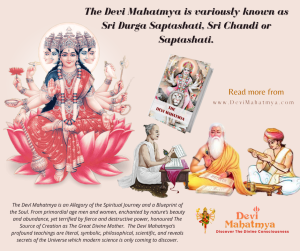
The “Devi Mahatmya” is variously known as Sri Durga Saptashati, Sri Chandi or Saptashati
The “Devi Mahatmya” is an Allegory of the Spiritual Journey and a Blueprint of the Soul. From primordial age men and women, enchanted by nature’s

The “Devi Mahatmya” is an Allegory of the Spiritual Journey and a Blueprint of the Soul. From primordial age men and women, enchanted by nature’s

𝐌𝐚𝐡ā 𝐊ā𝐥ī’𝐬 Ten Arms Represent The Ten Directions (the Four Cardinal Points, the Intermediate Points, and the points Above and Below) and convey the idea
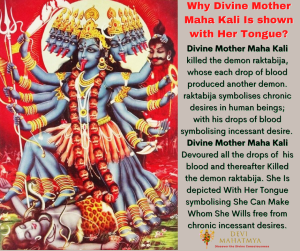
Divine Mother Maha Kali killed the demon raktabija, whose each drop of blood produced another demon. raktabija symbolises chronic desires in human beings; with his

Chaturbhuja MahaKali or the Four Armed MahaKali has been best explained in the Markandeya Puran under Pradhanik Rahasyam as Part of the process of starting
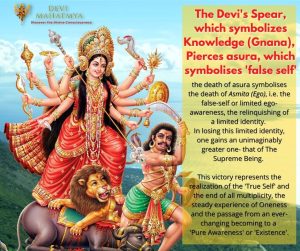
the death of asura symbolises the death of Asmita (Ego), i.e. the false-self or limited ego-awareness, the relinquishing of a limited identity.In losing this limited
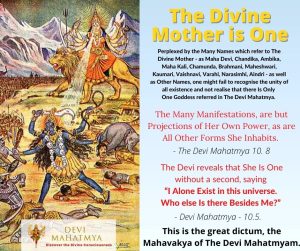
Perplexed by the Many Names which refer to The Divine Mother – as Maha Devi, Chandika, Ambika, Maha Kali, Chamunda, Brahmani, Maheshwari, Kaumari, Vaishnavi, Varahi,
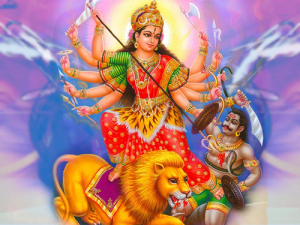
“The Devi’s Battle Sequence with the asura brothers is the inner conflict between The Boundless Self and the limited sense of self or the subjective
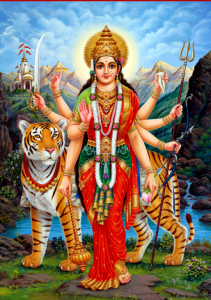
The earth quaked and the mountains rocked in the wake of the Warrior Goddess, The Great Unity Of The Innate Powers (Saktis) of all the
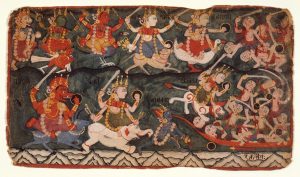
Perplexed by the multiple names employed to refer to The Goddess- Maha Devi, Chandika, Ambika, Maha Kali, Ma Chamunda, Ma Brahmani, Devi Maheshwari, Ma Kaumari,
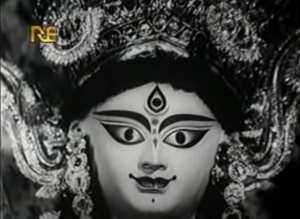
This final victory represents the realization of the true Self, the end of all multiplicity, the steady experience of Oneness, and the passage from an